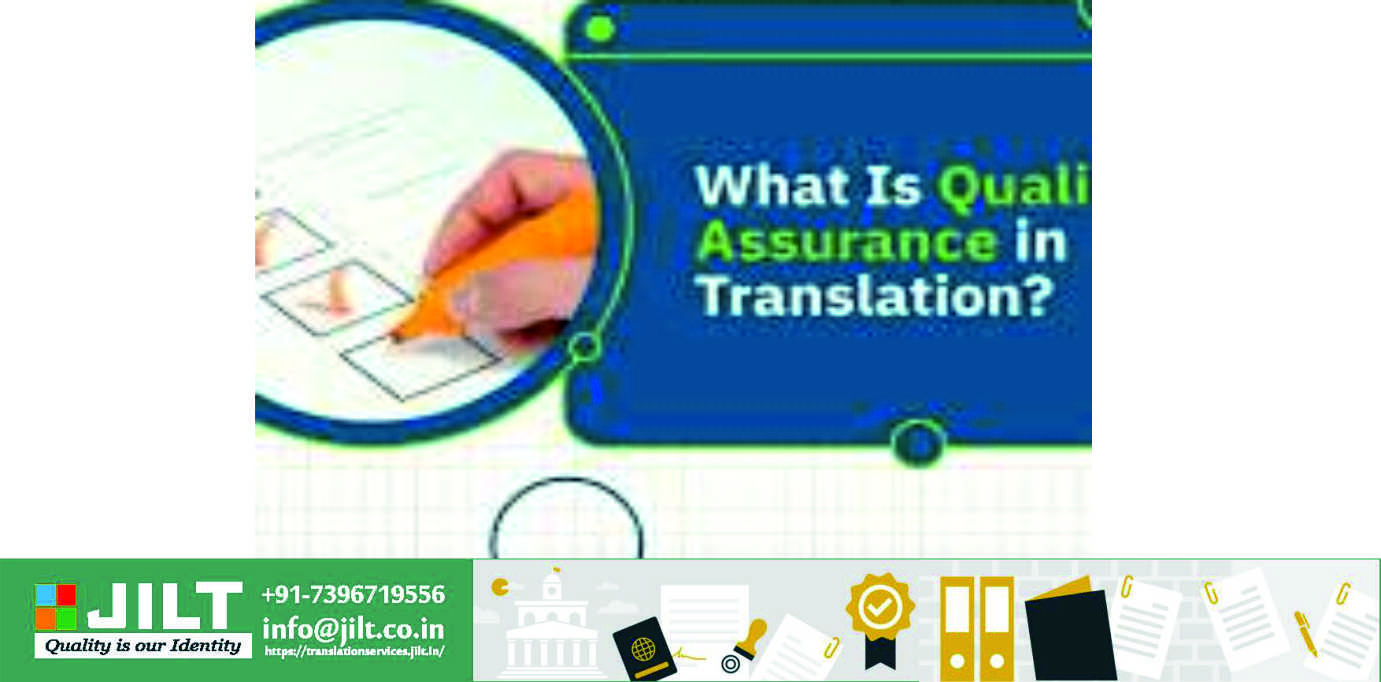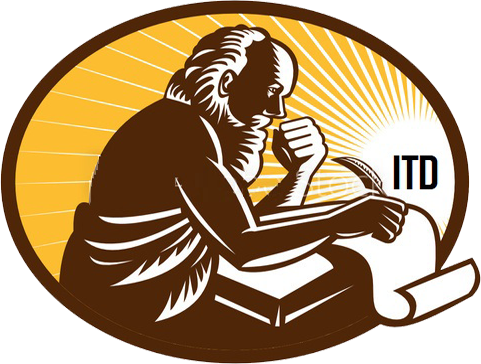
GUIDELINES FOR OPTIMAL QUALITY ASSURANCE IN TRANSLATION
by Dr. Abu Mazhar Khalid Siddique - March 28, 2024
How Does Translation Quality Assurance Work?
Quality assurance in translation is a methodical process that makes sure that translated material is correct, consistent, and true to the original. It involves carefully going over the translated text to find and fix mistakes that range from simple language flaws like spelling and grammar mistakes to more complex problems like mistranslations, cultural nuances, and misunderstandings of the context. This step is very important to make sure that the translated material gets the message across clearly in the target language while still respecting the subtleties and rules of the source language.
Expert linguists and reviewers use a variety of quality assurance methods, such as careful proofreading, linguistic validation, checking for consistency in terms, and assessing cultural appropriateness. Specialized software tools and quality control systems can also be used to speed up the process and make sure that all translations are the same. Assuring the highest standards of linguistic accuracy, translation experts use strict quality control measures to make sure that the final product meets clients' needs and accurately conveys the meaning and purpose of the original content.
The Significance of Translation Quality Assurance
Quality control in translation is very important because it has a big effect on how well a brand is known and how much of the market it can reach. When you translate something well, it makes sure that your information gets across to the right people, which builds relationships and makes communication easier. By translating your information correctly into the target language, you can get users more involved, get more people to use your product, and eventually reach more people in new markets. When it comes to marketing materials, product paperwork, or user interfaces, businesses can get their message across clearly and build trust with local customers when they use high-quality translations.
On the other hand, bad versions can hurt how people see a brand and how willing they are to use it. When material is translated badly, it not only fails to send the right message, but it also risks turning off potential customers because of mistakes in grammar, lack of cultural awareness, or confusing language. Poor translations can hurt trust, hurt the reputation of a brand, and make it harder to get into a new market. So, putting money into strict quality assurance methods is important to protect your brand's image, make sure that communication works well across a wide range of languages, and make the most of global growth and success opportunities.
Key Steps to Quality Assurance That Works in Translation
The different parts of localizing software must be covered by your QA process. These are the most important steps to take:
1. Tests of Language
A person who works with languages will make sure that the adapted content accurately conveys the original text's meaning and purpose.
Translated writing may be correct in terms of how it works, but it may not be consistent with style. If you have more than one translator working on the project, this mistake is likely to happen. You can hire a professional translator, but you can also use localization software with translation memory to speed up the process and make sure the tone and voice are always the same.
2. Checks before localization
If the source material is badly written or wrong, even the best translation won't give the user a good experience. Do a source text verification before you start the localization process. This step helps make sure that all of the source text is correct so that problems don't get worse and take more time and money to fix later.
3. Testing by good-looking
If you change the styles, text lengths, or text direction, it can affect how the product looks. In this step, you should bring in beta testers from the target areas to make sure that the software's "look and feel" is what users want.
Your testers should tell you what they think about the UI elements' layout, amount of information, ease of use, and cultural fit. Also, think about how they feel (for example, whether the UI makes them happy), as this can have a big effect on how many people use it.
4. Testing for functionality
This step comes right after the localization process to check the translated text for mistakes and inconsistencies. It checks for spelling and grammar mistakes, placeholders, formatting problems, extra spaces, words that are used more than once, and capitalization that isn't uniform (for example, sentence case vs. title case in headers).
In order to speed up the process, CAT tools are often used to test functionality automatically. But mistakes are frequently missed or misidentified, so to get the most accurate results, you should use both machine QA and a human tester.
Guidelines for Ensuring Quality Assurance in the Translation
The following best practices will assist you in ensuring that every aspect of localization testing is considered:
a) Employ Editors and Translators Who Know Your Product
Your translation and localization testing crew ought to be well-versed in both your product and your intended market. To provide a consistent user experience, they should utilize the right terminology in the translated text that is unique to your brand, product, and industry.
b) Take a Bilingual Exam
A bilingual examination that contrasts the translated content with the original text should be part of the translation testing procedure. The linguists in charge of this phase should, once again, be familiar with your brand and product to guarantee that the localized content keeps the original text's intent.
c) Test frequently and early.
Translation testing follows this agile software development principle. To modify the final user interface and alter the code, developers will require time. Testing should be a part of the project schedule and iterative process to help you identify errors early on and prevent them from becoming expensive problems.
d) Check for Translation Errors and Take Context into Account
Problems like errors in translation, omissions, and consistency should be found by your quality assurance team. Additionally, by taking context into account, search for typos that automated spell-checking systems might overlook. For example, the words “martial” and “marital” have different meanings even though they are spelled correctly.
e) Consult Your Local Teams for Input.
To make sure the content satisfies the needs and expectations of the local users, have the team run the software in each location. Is the local audience able to understand the instructional content, for instance? Can they utilize your program to get the desired outcomes?
f) Conduct the Translation Manager's Final Check.
After the material has been finalized, the project manager should check that all the files and documents are there. Additionally, confirm that all of the linguists' comments have been handled and resolved by the translation team. After that, the translation manager needs to go over project-specific checklists to make sure all the project's components are taken care of.
g) Utilize Technology to Make Localization Testing Easier
To help increase translation accuracy and consistency over time, use CAT tools with translation memory capability. Moreover, make a dictionary of translations and keep it on your platform for managing localization. This makes it easier to guarantee that translators utilize the same terminology unique to each brand and product throughout the translated content.
Conclusion
To sum up, in order to achieve the highest standards of linguistic accuracy and cultural relevance in translation, it is imperative that detailed criteria for effective quality assurance be implemented. First and foremost, in order to guarantee alignment with project objectives and expectations, it is imperative that translators, reviewers, and clients establish clear communication channels. This promotes cooperation and effective feedback loops, making it possible to quickly identify and address possible problems.
Secondly, productivity and consistency can be greatly increased by utilizing technology-driven solutions like terminology databases, translation memory tools, and automated quality checks. These technologies reduce errors, expedite the translation process, and preserve consistency between projects. Regular training and professional development programs also enable translators to keep up with language improvements, cultural quirks, and industry trends, which improves their competence and guarantees that best practices are followed.
Translation experts may maintain the highest standards of quality assurance by following these criteria and producing translations that not only accurately represent the intended message but also connect with the target audience on a linguistic and cultural level. This strategy not only improves brand recognition but also cultivates credibility, acceptability, and trust across a range of marketplaces, which eventually propels corporate expansion and success on a worldwide level.
Our organization employs native-speaking translators who can provide certified translation services in any language. We provide translation services in English (Urdu), Arabic (Spanish), German (French), Persian (Iranian), French (Italian), Japanese (Korean), Russian, and any other Indian or local language. Expert proofreaders at our company will inspect the translation. We also provide a courier service to deliver completed documents to our clients.
- Also Read :- THE POWER OF EFFECTIVE ADVERTISING IN BRAND RECALL IS AN INDELIBLE IMPACT
- Also Read :- BIRTH CERTIFICATE TRANSLATION \r\n& LEGALIZATION: A COMPREHENSIVE GUIDE
- Also Read :- Police Clearance Certificate Translation Services
- Also Read :- Happy Hindi Diwas 2020
- Also Read :- Services for Technology Translation and Digital Localization
- Also Read :- Migration Certificate Translation Services
- Also Read :- Embalming report translations (JILT - Certified Translation Services)
- Also Read :- Physical or Chemical Analysis Reports of Products Translation Service
- Also Read :- Experience Certificate Translation Services
- Also Read :- MOST LANGUAGES USED ON THE INTERNET FROM THE BEGINNING
Search
Categories
Archives by Month
Popular Blog
QUICK TRANSLATION QUOTE
Need help with a translation?
Get in touch with us
Whether you have a specific project you want to discuss, need a translation quote or simply want to discuss your requirements, do not hesitate to get in touch with us.











Social Networks